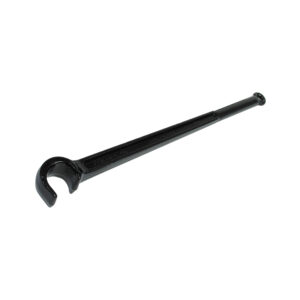
Valve operation might seem like a routine task, but for industries where valves are part of daily operations, such as oil, gas, and water utilities, choosing the right tool for the job is essential. The Occupational Safety and Health Administration (OSHA) enforces standards to prevent workplace injuries, including specific recommendations against using pipe wrenches on valve wheels. When the wrong tool is used, the risk of injury rises significantly due to sharp burrs and other hazards that can damage both the valve wheel and the operator’s hand. Here, we explore why valve wrenches are essential for safe, efficient, and compliant valve operations.
While pipe wrenches are common in many toolkits, they are not designed to handle valve wheels. The teeth of a pipe wrench are intended to bite into the material of a pipe, which is fine for gripping but disastrous for the softer rims of valve wheels. Using a pipe wrench on a valve wheel rim can leave sharp burrs that can result in painful hand injuries. OSHA inspectors are aware of these risks and can issue penalties when inappropriate tools, like pipe wrenches, are used on valve wheels. To protect operators and keep equipment in good condition, valve wrenches are a better and safer choice.
REED offers a range of specialty valve wrenches designed to address the limitations of pipe wrenches. Not only do these wrenches minimize the risk of damage to valve wheels, but they also improve control and ease of use. Here are a few of the top options from REED:




Choosing the correct tool for valve operation is crucial for safety, efficiency, and compliance with OSHA standards. Valve wrenches are specifically engineered to provide a safe, reliable grip on valve wheels, helping prevent injuries and equipment damage. Tools like REED’s Operator’s Wrench and Valve Wheel Wrenches offer the perfect combination of leverage, durability, and safety, allowing operators to perform their tasks confidently and effectively. By investing in the right tools, organizations can improve workplace safety, reduce downtime, and increase productivity—benefits that speak for themselves in any industrial setting.